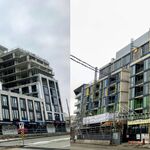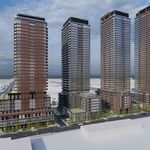W. K. Lis
Superstar
They should redesignate all the routes for the TTC to reflect the "priority" they have or should have.
A prefix maybe of some help. The subways (Lines 1, 2, & 4) should have the same prefix, or maybe letters instead of numbers. The LRTs (Lines 5 & 6) should have a different prefix. The streetcars should have leave the 5nn designation behind and get a different prefix. The express buses (9nn) should be go on their own way prefix. The local buses could continue without any special prefix, to show that they are "ordinary".
The Jane RapidTO designation for its buses depend upon which option the politicians go with. See link for more information.
A prefix maybe of some help. The subways (Lines 1, 2, & 4) should have the same prefix, or maybe letters instead of numbers. The LRTs (Lines 5 & 6) should have a different prefix. The streetcars should have leave the 5nn designation behind and get a different prefix. The express buses (9nn) should be go on their own way prefix. The local buses could continue without any special prefix, to show that they are "ordinary".
The Jane RapidTO designation for its buses depend upon which option the politicians go with. See link for more information.
Option 2 is more of a BRT. Other cities make do with a single traffic lane and a reserved bus lane, IF they make transit a priority and don't surrender to the automobile. If they go with option 2, a BRT, then have a prefix with the Jane 35 similar to the LRTs. The same prefix should apply to the other RapidTO routes, IF they are BRTs. See link.
- Keep Existing Conditions with Minor Road & Public Transit Change
- Priority Bus Lanes
- Priority Bus Lanes on Key Segments
- High Occupancy Vehicle Lanes (3+)
- Queue Jump Lanes at Key Intersections
Last edited:




